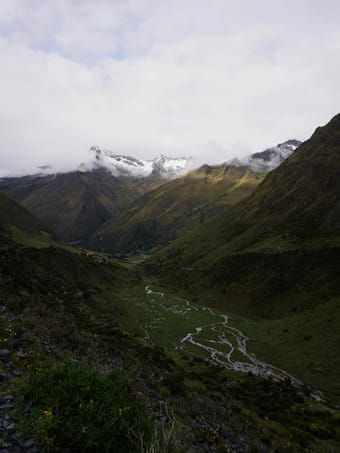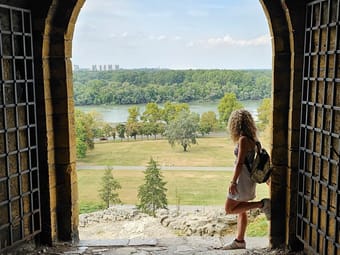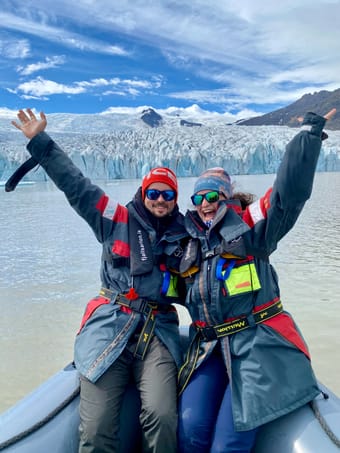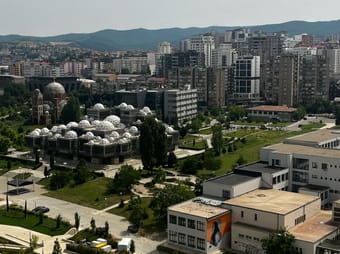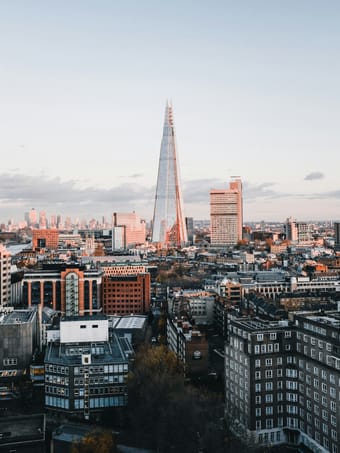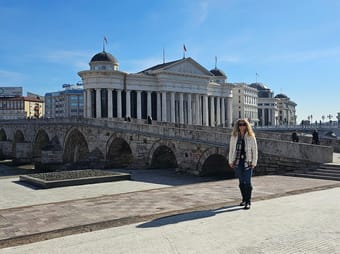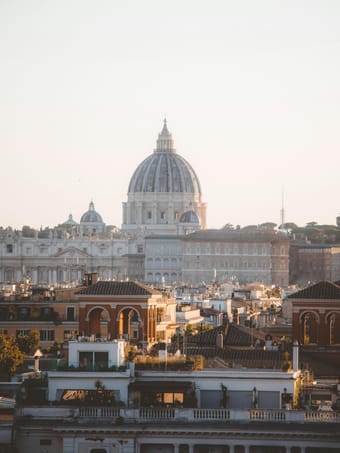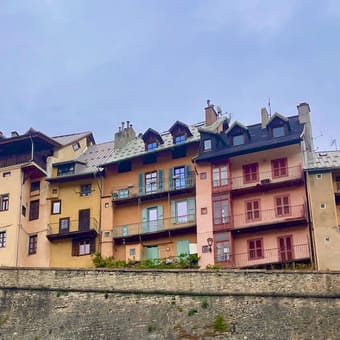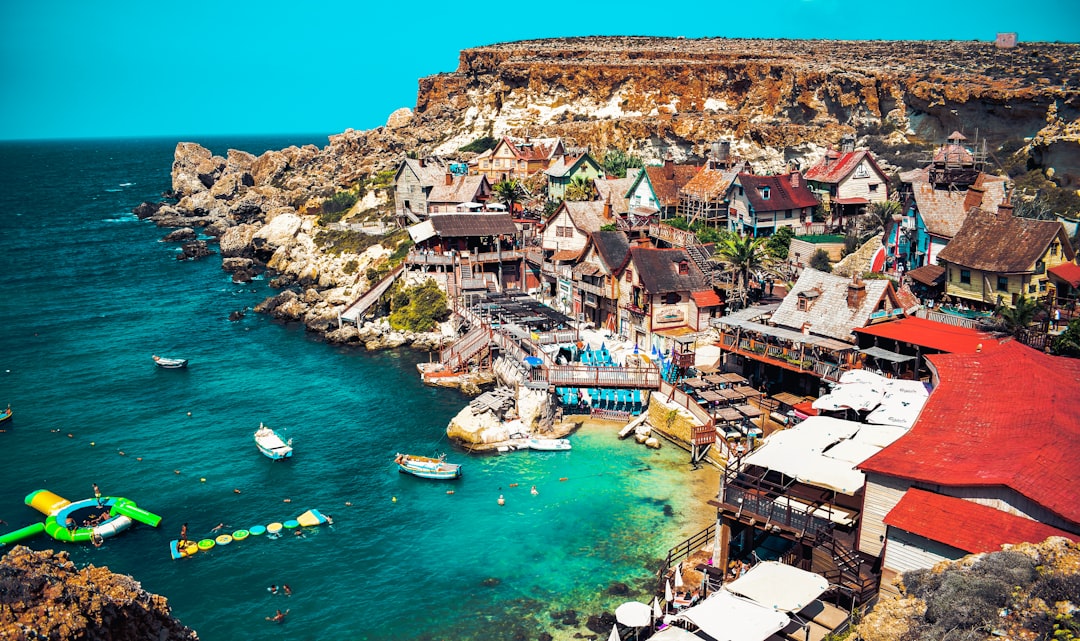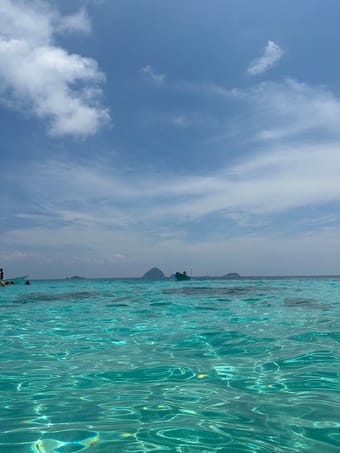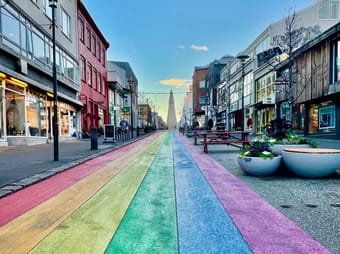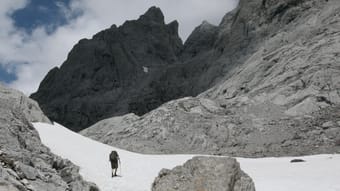Results for Bar Adventure
Peru is a hotspot for travellers for good reason - this country literally has it all - coastlines, rainforests, mountains, and the desert. We recently visited and below you will find our EXACT itinerary during our time in Peru: 3 days in Cusco, 4 days Trekking (to Machu Picchu), 2 days in Lima, and a 2 day tour to Paracas & Huacachina. This is a total of 11 days in adventure paradise.
Backpacker • Car-free • Couples • Family • Female Solo • Adventure • Budget • Camping • Photography • Outdoors • Foodie
Free
6
Considering a trip to Belgrade but don't know if it is worth a visit? Are you wondering what there is to do there?
This FREE 3-day city guide will help you navigate your way around the capital city of Serbia to ensure you get the most out of your short getaway.
This guide includes:
👉 What there is to see and do
👉 Restaurant and bar recommendations (tried and tested)
👉 Recommendations on where to stay
I can also offer a full 3-day itinerary which provides:
➡️ a recommended schedule for you
➡️ more sightseeing places
➡️ transport options and prices
➡️ local information such as weather, currency etc.
➡️ more bar and restaurant recommendations of which I can make reservations for you
and more,
leaving you with nothing to worry about other than enjoying one of the oldest continuously inhabited cities in Europe and the world
Backpacker • Couples • Female Solo • Groups • Adventure • Architecture • Budget • Design • Foodie • History • People & Culture • Photography • Road Trip
Free
6
We were living and working in Iceland for 5 months and these are the places you have to visit ! We offer 8 - day itinerary for roadtrip around Iceland with all the information you need around the road
fees 💸
equipment 🥾🧥
restaurants 🥘🥕😋
bars 🍺🍸
tips for accomandations 🛌
Our itinerary is unique, because if you are not a reader and you prefer to get information in short clear way, we also provide the photos of the place with all the necessary info. Iceland can be expensive, but not so much, when you travel with us ! Check it now and if you wanna know more secret tips, places, information about life, work and way more in this beautiful land , do not hesitate to CONTACT us and we will be happy to share our information in online meeting, discussing YOUR perfect trip/life in Iceland.
Couples • Backpacker • Accessibility • Groups • Adventure • Budget • Outdoors • Road Trip • Photography
Free
5
Prishtina is the young, vibrant capital of Kosovo. Filled to the brim with uber cool cafes, thrift shops, art spaces, and concerts there is always something to do. Browse our map to find:
- The best restaurants, cafes, bakeries & bars
- The coolest art, concert, film & music venues
- The most interesting museums, parks & monuments
- The best spots to thrift & shop
With the Balkans growing in popularity, Kosovo is becoming the not-so-hidden gem of the region. Don't miss out on the buzz of Prishtina on your Balkan adventure - its absolutely worth a visit!
📌 SAVE this guide for your upcoming trip!
Backpacker • Car-free • Couples • Female Solo • Family • Architecture • Budget • History • Foodie • Coffee • People & Culture • Slow Travel • Shopping
$5.00
5
Sayulita is a long-loved beach town on Mexico’s Pacific coast famously known for its consistent and welcoming surf. The once sleepy town has exploded in popularity over the past 5 years, which means it can skew a little expensive by Mexico standards. Nonetheless, with cheap, direct flights to Puerto Vallarta, it still makes an ideal destination for a lively weekend getaway with your friends, or a laidback, health-focused escape — choose your own adventure! Just don’t forget to explore outside the center of town. This area has a lot to offer.
Thinking about traveling to Sayulita? As a Fora Travel Advisor, when you book your trip with me, you’ll enjoy FREE PERKS as listed under the hotel section. Schedule a free consultation call to learn more — and let’s make your dream trip a reality.
ONWARDS!
FOR MORE FREE GUIDES: https://www.foratravel.com/travel-guides-itineraries-and-trip-reports?advisor=maggie-pecorino
Free
5
This is your one stop guide to experiencing one of the most vibrant cities in Switzerland, Zurich.
While living here I have experienced the city and surrounds to its full. Whether thats for city lovers looking to maximise the places they see, foodies looking for the tastiest plates, beer enthusiasts looking for the freshest local pints, lovers of caffeine at any time of day, or anyone who just wants to relax, this is for you.
In this guide:
🚂 Advice for public transport, SIM cards, etc
🏨3 Hotel options for every budget
🌇7+ things to do
☕️The 3 best local coffee shops
🍽️ 11 amazing places to eat
🍻 4 breweries
🍷3 wine bars
🍸3 cocktail hangouts
Please read my notes on each place to get the details. You can curate your own trip based around these places or feel free to contact me with any questions you may have and work together on an itinerary.
Seek and Enjoy! ✨
Foodie • Nature • People & Culture • Coffee • Wine • Mountain • Relaxation • Shopping • Wellness • Adventure • Photography • Architecture • Art • Budget • History
Free
5
Dive into the vibrant heart of London with our ultimate guide to the city’s best. From historic landmarks and world-class museums to hidden gems and bustling markets, this guide is your passport to experiencing London like a local. Ready to discover the magic of London? Your adventure starts here.
This guide contains:
- Where to Stay
- Iconic Landmarks
- Amazing Museums
- Where to Shop
- Best Rooftop Bars
- Where to Eat
- Bustling Markets
- Useful tips
- Direct links to purchase tickets for popular attractions
50+ • Backpacker • Couples • Family • Groups • Female Solo • Adventure • Art • Outdoors • People & Culture • Slow Travel • Shopping
$24.00
$30.00
20% off
5
Explore hotel recommendations, top things to do, and highly rated places to eat on the islands.
About Turks and Caicos:
Turks and Caicos Islands, where pristine beaches, crystal-clear waters and untouched natural beauty await. This Caribbean archipelago is a paradise for nature lovers, offering breathtaking coral reefs teeming with vibrant marine life. With a perfect blend of luxury resorts, warm hospitality and a laid-back island atmosphere, the Turks and Caicos Islands provide an idyllic escape for relaxation, adventure and indulgence. Whether you're exploring the underwater wonders, strolling along powdery sands or immersing yourself in the local culture, these islands offer an extraordinary experience that will leave you captivated and yearning for more.
Adventure • Foodie • Wellness • Beach • Relaxation • Slow Travel • Nature
Free
5
Everything you need to have the most amazing visit to Positano. This itinerary is the perfect mix of adventure and relaxation- while not breaking the bank.
I recommend using this guide to create 4 days in Positano. This guide would be perfectly paired with a trip to Sorrento, Rome, Capri, or any other Italian city of your choosing.
This guide includes:
5 Hotels
6 Activities
8 Restaurants
4 Bars
5 Bonus Tips
Budget • Photography • Relaxation • Beach • Slow Travel
$10.00
5
Considering a trip to North Macedonia but don't know if it is worth a visit? Are you wondering what there is to do in Skopje?
This FREE guide will help you navigate your way around the Skopje and the surrounding areas to ensure you get the most out of your getaway.
This guide includes:
👉 What there is to see and do
👉 Restaurant and bar recommendations (tried and tested)
👉 Recommendations on where to stay
I can also offer a full itinerary which provides:
➡️ a recommended schedule for you
➡️ more sightseeing places
➡️ transport options and prices
➡️ local information such as weather, currency etc.
➡️ more bar and restaurant recommendations of which I can make reservations for you
and more,
leaving you with nothing to worry about other than enjoying one of the oldest continuously inhabited cities in Europe and the world
Backpacker • Couples • Groups • Female Solo • Family • Architecture • Adventure • Coffee • Foodie • Design • History • People & Culture • Outdoors • Photography • Budget • Shopping • Road Trip
Free
5
Welcome to Eastern Sicily, where stunning scenery, rich history, vibrant culture, sunny beaches, and delectable cuisine await you on an unforgettable road trip.
Get ready to explore some of the most iconic destinations in the region and live amazing experiences.
Starting in the enchanting town of Taormina, one of the capitals of Italian Dolce Vita, this itinerary takes you on a journey through the provinces of Catania, Syracuse, and Ragusa, not to forget the imposing Mount Etna, Europe's largest and most active volcano.
Each stop along the way offers a unique glimpse into the island's diverse culture, from the ruins of ancient Greek temples to the bustling streets of vibrant cities.
Whether you're looking to bask in the warm Mediterranean sun, indulge in traditional Sicilian delicacies, immerse yourself in the fascinating history and culture of this captivating region, or witness some of the world's most spectacular natural wonders, this road trip has something for everyone.
So fasten your seatbelts and get ready to embark on an adventure that will leave you with memories that last a lifetime.
What's included in Eastern Sicily Road Trip Guide:
✔️ An itinerary through the main destinations in Eastern Sicily
✔️ 20 Hotel recommendations in various location
✔️ 30 Recs of places to eat along the way
✔️ 12 Experiences, guided day tours and excursions to book
✔️ Interactive map of the itinerary
Boutique • History • Foodie • Nature • Art • People & Culture • Slow Travel • Romantic • Road Trip
$20.00
4
The perfect guide to a getaway in Sedona, Arizona 🏜️
Recommendations in this guide include my picks for…
✨Boutique Hotels & Airbnbs
✨Must try restaurants & bars
✨Hiking Trails & Outdoor Activities
✨Local Shops
✨Day Trips & more!
Adventure • Art • Boutique • Luxury • Wellness • Nature • Romantic • Camping • Mountain • Wine • Foodie
$18.00
4
Touristically Travel
Available for hire
The Rome Experience: Your Comprehensive Guide to the Eternal City
Immerse yourself in the timeless beauty and vibrant culture of Rome with this comprehensive Rome Travel Guide. This detailed travel guide is your passport to exploring one of the world’s most captivating cities, where ancient history and modern life intertwine in a mesmerizing dance.
From the awe-inspiring Colosseum and the majestic Vatican City to the charming streets of Trastevere and the serene beauty of Villa Borghese, this guide provides in-depth insights into Rome’s iconic landmarks and hidden gems. Discover the rich history and artistic heritage that define Rome through detailed descriptions, practical tips, and local recommendations.
Inside you'll find:
- Where to stay
- Must See Landmarks
- Amazing Day Trips Ideas
- Where to Shop
- Where to Eat
- Best Cafes & Gelaterias
- Useful tips
- Direct link to book hotels & ticket purchase
- Vibrant Bars & Clubs
50+ • Backpacker • Couples • Family • Groups • Female Solo • Adventure • Architecture • Outdoors • History • Slow Travel • Romantic • Shopping
$14.75
4
Nikki | Weekend Postcards
Available for hire
A Weekend in Briançon | Experience Briançon, France like a local
Hi fellow travelers! Thanks for stopping by to check out this guide with over 40 places to check out in the greater Briançon region.
Tucked away in the heart of the giants, the quaint city of Briançon is full of breathtaking mountain views, delicious boulangeries, and tons of outdoor adventure activities for the adrenaline addict in the family.
In this destination guide, you will get a sneak peek into what it's like to live like a local in Briançon. From our favorite restaurants, to various adventure options, this guide has it all. Come along with us as we explore the area with local resident Alexandre, who I had the pleasure of spending a month with. Due to staying with a local, I did not include recommendations of where to stay. There are a variety of options from Hotels, Airbnb's, Gîtes, and camping in the surrounding area. During the high tourist season, places can book up quickly so be sure to make your accommodations in advance.
---
All year round you can find activities to do in Briançon, but peek summer tourist season starts in late June, July, August, early September, and the winter tourist season begins in late December and runs until the end of March. Some activities listed in this guide are seasonal and are not open year round. Always check before booking a trip.
Things to note: Briançon is located part in the valley but is full of hills and steep climbs. This is a very walkable city designed for the outdoor enthusiast, nature lover and sports participant.
This is a live guide and will update as information changes in real time.
Backpacker • Car-free • Groups • Female Solo • Family • Digital Nomads • Couples • Adventure • Mountain • Slow Travel • Nature • Budget • Outdoors • Road Trip • History • Foodie • Photography
Free
4
Unlock the secrets of Paris, where timeless elegance meets modern allure. From the iconic Eiffel Tower to hidden gems tucked away in charming quartiers, our Paris travel guide will lead you on a journey through the heart of the City of Light. Explore must-see landmarks, savor world-class cuisine, and immerse yourself in the art and culture that define this enchanting metropolis. Whether you’re a first-time visitor or a seasoned wanderer, let us guide you through the quintessential experiences and insider tips that will make your Parisian adventure unforgettable.
This guide contains:
- Where to stay
- Must See Landmarks
- Where to Shop
- Amazing Rooftop Bars
- Where to Eat
- Best Cafes
- Useful tips
- Direct links for easy hotel booking & ticket purchase
50+ • Backpacker • Couples • Groups • Family • Female Solo • Digital Nomads • Adventure • Art • Coffee • Luxury • People & Culture • Shopping • Slow Travel • Wine
$9.10
$13.00
30% off
4
Delve into the enchanting charm of Prague with this curated guide, highlighting the city’s rich architectural and historical heritage. Experience the city’s captivating blend of Gothic, Baroque, and Renaissance styles through its iconic landmarks and historic sites. Stroll through picturesque squares, ancient churches, and grand palaces, each telling a story of Prague’s past.
Enjoy the vibrant atmosphere of cultural and artistic venues, from bustling markets to serene parks. Whether you're exploring medieval streets, admiring stunning viewpoints, or indulging in local cuisine, Prague offers a captivating mix of history, beauty, and modern charm.
This can be done in one day but I do suggest taking two. I've also added some cool bonus bars / resta
Adventure • Architecture • Art • Design • People & Culture
Free
4
We visited Malta in September 2022 and it was honestly one of the best places we’ve been in Europe. I’d highly recommend taking a trip to this island if you are looking for an equal mix of beach break and sight seeing in the city.
In this guide, I’ll take you through the full detailed itinerary of our trip, including 5 full days of activities and 2 travel days
(1 week in total)
Itinerary overview:
Arrival day: Travel day (we arrived in Malta late at night)
Day 1: Exploring St Paul's Bay
Day 2: Sight seeing in Valetta
Day 3: Café Del Mar beach club
Day 4: Boat trip to the Blue Lagoon
Day 5: Rooftop pool & Taza sky bar
Day 6: Travel home :(
This guide includes hotel recommendations, places to eat and drink, sight seeing tours, landmarks to visit, transportation details and more.
Adventure • Architecture • Art • Foodie • History • People & Culture • Romantic • Coffee • Beach • Relaxation
Free
4
STOP wasting time researching and get my complete guide to Kecil Perhentian Island, designed to give you the ultimate beach escape. This guide covers everything you need to know to make the most of your trip to the Perhentian Islands.
What’s included in my guide?
🛫 Travel Made Easy: Detailed information on how to get to the Perhentian Islands, including flights, ferries, and transfers, ensuring you have a smooth journey.
🏨 Accommodation Recommendations: Handpicked places to stay for every budget, from beach bungalows to luxurious resorts, with direct booking links.
🌊 Activities and Excursions: Must-do activities, including snorkeling spots, diving schools, and jungle treks, with tips on the best times to go and what to bring.
🍽️ Dining Guide: Top restaurants and beach bars to enjoy fresh seafood and local cuisine.
🔑 Essential Travel Tips: Crucial information such as the best time to visit, what to pack, safety tips.
🗺️ Interactive Map: An interactive map featuring 17 linked locations, including beaches, restaurants, and activity spots, to help you plan your perfect getaway.
As someone who has explored the Perhentian Islands firsthand and is constantly updating my travel insights, this guide is your key to an unforgettable beach vacation. 🌟
P.S. Download the Thatch app for a better viewing experience!
Backpacker • Couples • Digital Nomads • Adventure • Boutique • Budget
$10.00
4
Reykjavík is the capital and largest city in Iceland. It’s also the northernmost capital in the world. The city, on the southwest coast of the island nation, is home to less than 150,000 people (that’s 60% of the total population). It’s by no means sleepy, though. It has a thriving art scene (music festivals, independent record stores, pop-up exhibits) and foodie spots (Michelin restaurants, organic wine bars, coffee culture). A grand church towers over the city. Candy-colored houses line the streets. Thermal swimming pools are gathering spots for most neighborhoods. Northern lights sightings are a real possibility (seasonally, of course). It’s also the jumping-off point for exciting adventures all around the Land of Fire and Ice. Pack for all seasons, as the weather changes frequently throughout the day--no matter what time of year it is. And be prepared to fall in love.
This detailed guide includes:
Places: islands, neighborhoods
Stay: hotels
Eat: bakeries, cafés, coffee shops, food carts & halls, ice cream, Michelin stars, restaurants
Drink: beer bars, breweries, cocktail bars, wine bars
Shop: beauty products, bookstores, chocolate shops, clothing boutiques, flea markets, outdoor wear, record stores, vintage clothing, wool products
Do: art museums, churches, concert venues, history museums, lakes, memorials, parks, peace stones, roads, sculptures, sports venues, squares, streets
Transportation: airports, bus terminals, car rentals, ferries
Note: I travel to Reykjavík quite frequently, so this guide is updated often.
Car-free • Art • Boutique • Foodie • People & Culture • Coffee • Design • Shopping • History
$30.00
3
Seven-day trek based in refugios.
INTRODUCTION
The Picos de Europa is a region of limestone peaks reaching over 2500 metres above sea level; the highest being Torre de Cerredo at 2650 metres. The route described here is one that I hiked alone in early summer. The best time to tackle the route is between June and September. There is more likely to be snow on the high passes in early June but they are usually not to difficult to negotiate.
The Picos de Europa is not as well known as the Pyrenees or Alps and as such the hiker traffic is less and the tourist infrastructure is less developed. This makes the area feel less spoilt but it can also make it a more challenging area to explore with fewer trails and little to no signposting. Always take a map with you: the Editorial Alpina 1:25,000 maps are the best. I took these and also used the outdooractive app and downloaded the relevant map tiles. This is useful for pinpointing where you are, in what can be confusing terrain. I was lucky to have clear weather for my entire trek but I would imagine that it's pretty difficult to navigate when the cloud is down on the mountains so take a compass too.
You can stay in refugios every night on this hike and wild camping is permitted above 1500m; details below.
I can't recommend the Picos de Europa as a hiking destination enough. The mountains are magnificent but there are also beautiful extensive woodlands at lower altitudes, as well as meadows full of wildflowers and butterflies. The juxtaposition between the stark limestone peaks and the gentle greenery of the valleys is beguiling.
DISCLAIMER: Please note that hiking in the Picos de Europa is not risk free. It is a very challenging area in which to hike. I accept no responsibility for any accidents you may experience while hiking this route. You are responsible for your own safety. Some of the dangers and difficulties are listed a little further down this guide.
HOW BUSY?
Unlike some of the more well know hikes around Europe this trail is less well trodden and as such the trail can be quite hard to follow at times, and at other times there is no trail! Despite this, refugios, being small, fill up fast (see below).
REFUGIOS
The hike is made easier if you stay in the staffed refugios where you can recharge your metaphorical batteries. Accommodation at these mountain huts is in communal dormitories and you will need to bring your own sleeping bag. It's best to book ahead as they are often full throughout the summer. Prices are around the €12-17 mark and they also do affordable meals (breakfast, picnic lunch and dinner).
There is also a handful of unstaffed, very basic mountain shelters with no services and no beds but these can be a good option in an emergency. Most of the refugios only accept cash so be sure to take plenty with you before you set off as there are no ATMs! All the refugios on the route are listed in the route description below with website links.
WILD CAMPING
Camping is only permitted at 1500m above sea level or higher. There is not much water anywhere above this altitude so be sure to fill up when you get the chance (at refugios) before camping in a remote spot.
POSADA DE VALDEON
This beautiful village tucked in the valley between the Macizo Central and Macizo Occidental is a lovely place to wander for a few hours. At the centre of the village there are a number of restaurants and bars and a small square with a water fountain. If you need somewhere to stay before or after the trek you'll find hotels, guest houses and a youth hostel. There is a hotel recommendation and link in the route description.
In the centre of the village is a pharmacy should you need any blister plasters! And on the road to the west of the village is the National Park office where you can find information about hiking and anything else to do with the national park.
GETTING THERE
From the UK there are Ryanair flights to Oviedo (Asturias airport) from London Stansted. A bit further afield you can get flights to Bilbao and Santander from the UK and the rest of Europe. Getting from the airport is a little complicated but there are buses to Posada de Valdeón from Oviedo changing in Cangas de Onis. The journey takes about 4.5hrs. There are also buses from Santander and Bilbao changing in Llanes and Riaño with the journey taking around 15hrs from Bilbao.
An easier but more expensive option is to get a taxi. You could also hire a car but of course you will have to leave the car sitting idle in Posada de Valdeón while you do the hike.
FLORA & FAUNA
This area of northern Spain is fantastic for wildlife. At lower elevations the beech and sessile oak woodland stretches for miles over rolling hills. This is part of the boreal forest that once would have covered much of Europe and is home to roe deer, wild boar, red squirrels, pine martens and brown bears.
In the skies you have a good chance of seeing griffon vultures, golden, booted and short-toed eagles, black kites and peregrines. Of the smaller passerine species the Picos are home to red-backed shrikes, black redstarts, spotted flycatchers and black woodpeckers.
But it's the wildflowers in the meadows and on the woodland edges that are the real joy and most easily appreciated. Vetches, cinquefoils and orchids create a colourful patchwork of colours with butterflies bringing the whole scene to life. Look out for swallowtails, fritillaries and hairstreaks.
NAVIGATION
Navigation is difficult as the terrain can be confusing and in many places there is no trail whatsoever. Take a map (1:25K Editiorial Alpina maps are the best), compass and GPS and know how to use them. It's also a good idea to download the map on a relevant map app. I used the outdooractive app but others are available.
WEATHER
Thunderstorms are common, usually in the afternoon and these can be particularly dangerous high up in the mountains. It's best to hike early and get to a refugio by lunchtime if there are afternoon thunderstorms in the forecast. The weather in this part of Spain is very changeable as it has a maritime climate. Rain and thick fog are possible but equally long periods of warm sunshine are not unusual. The best advice I can offer is to be prepared for anything. Pack suncream and a sunhat but don't forget your waterproofs either.
FALLING ROCKS
Rock falls are not unusual as chamois and other hikers can dislodge rocks above you. Getting caught in a rockfall is not so common but not impossible. Be aware and if you see rocks heading your way, and cannot find cover, crouch down on the floor and pull your rucksack over your head and back.
DRINKING WATER
There is very little running water as these mountains are mostly comprised of permeable limestone. You will need to take plenty of water with you each day (I packed three litres every day and usually drank it all). You can fill up at the refugios and there are a few fountains / fuentes although most of the ones I saw marked on the Editorial Alpina map were dry when I found them.
THE SUN
Sunburn and sunstroke are both real dangers and there is little shade. Keep hydrated and wear a sun hat that covers your neck.
TERRAIN
In some places you need to scramble up steep rocky sections. You will need to have experience in this kind of terrain and have a head for heights! The terrain is very rocky and uneven at higher altitudes so you will need strong, sturdy footwear. Trekking poles are also invaluable in providing support and helping you across and up awkward sections. There is also a lot of steep ascent and descent on this route so you will need to be reasonably fit.
DANGEROUS ANIMALS
On many parts of the trail you will encounter cows. In my experience they are very docile and used to trekkers so they shouldn't be of any concern. You may also find flocks of sheep and while these aren't dangerous they are often accompanied by shepherd dogs which have been trained to keep intruders away from the flock. They can be quite intimidating when they start barking at you. If you see sheep ahead it is best to give them a wide berth, even if this means veering away from the trail for a while. If you walk directly towards or through a flock of sheep you risk agitating the shepherd dogs.
Bears are not common in the Picos de Europa but there are bears in other parts of the Cantabrian Mountains, notably Somiedo National Park, not far to the west, and there is always the possibility of seeing an itinerant bear wandering through the Picos. Eurasian brown bears are not as big nor aggressive as the grizzly bears of North America so you shouldn't worry too much about an encounter. It's extremely unlikely you will see one so if you do, consider yourself very lucky.
Wild boar are common in the woodlands at lower altitudes. They are not as aggressive as some people will tell you and tend to be nocturnal. I did see some in the daytime near Vegabaño. As soon as they saw me they ran away, crashing through the undergrowth. As with any large animal it's best to simply give them plenty of space to move away from you.
I hope none of this advice puts you off hiking in the Picos de Europa. Yes, it's a challenging mountain area but the rewards for hiking here are great. Enjoy the hike!
Adventure • Nature • Slow Travel • Sustainable/Eco • Mountain • Camping
$12.00
3
Ask ThatchGPT
